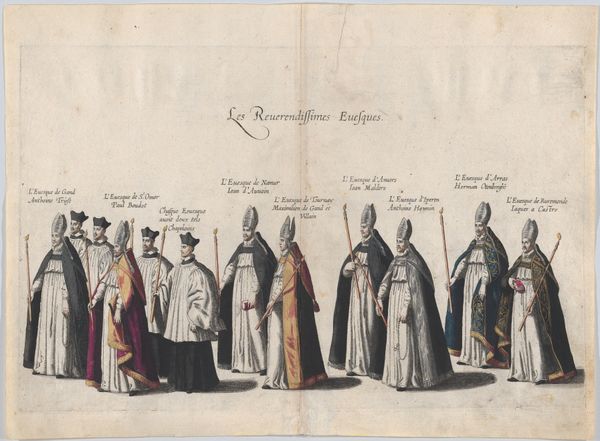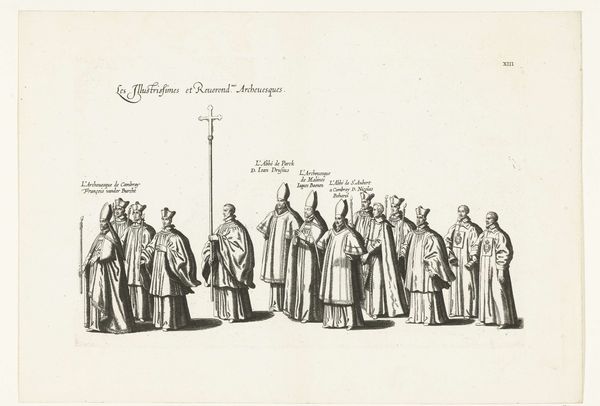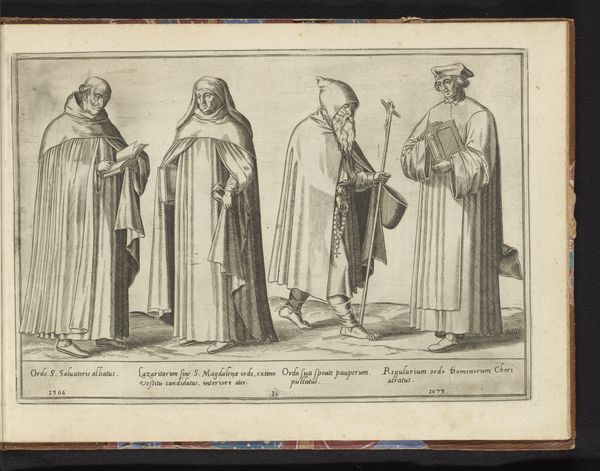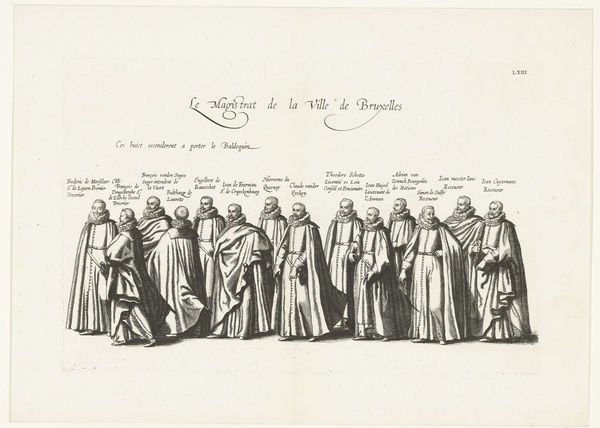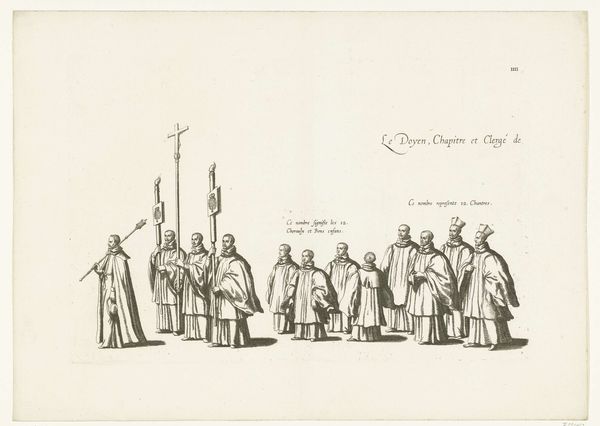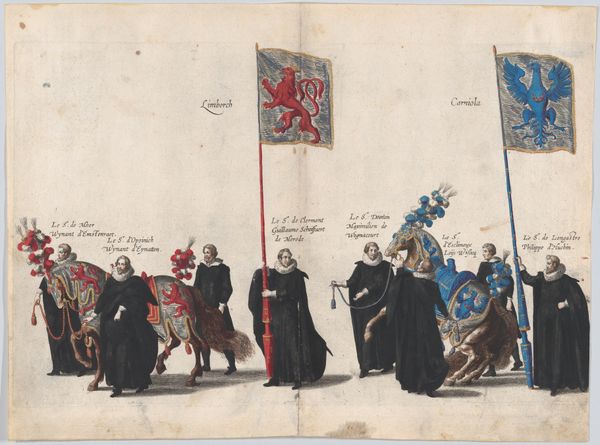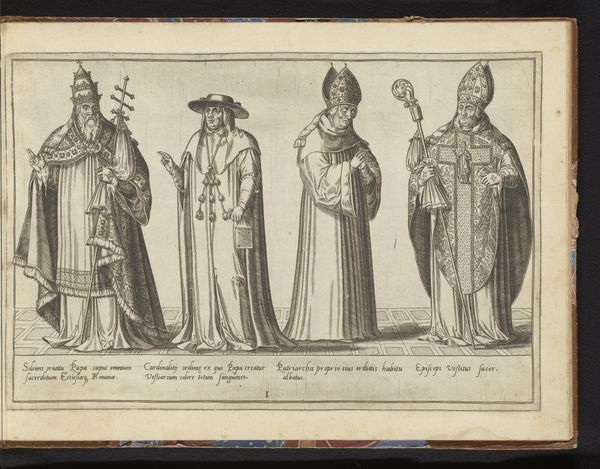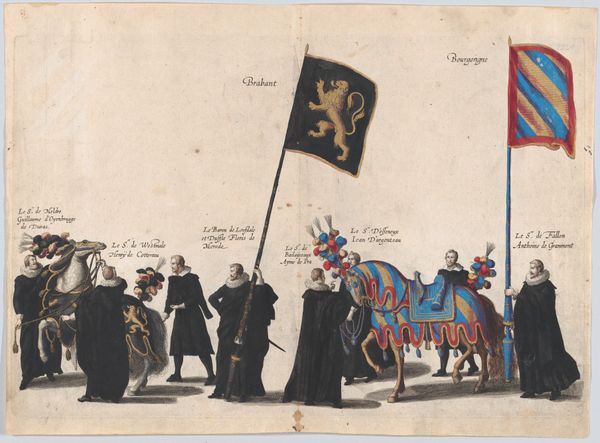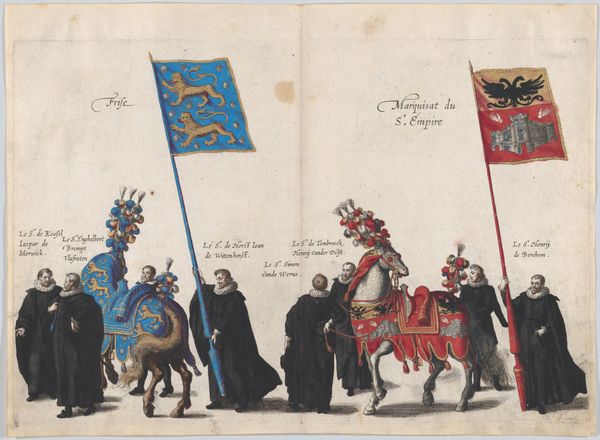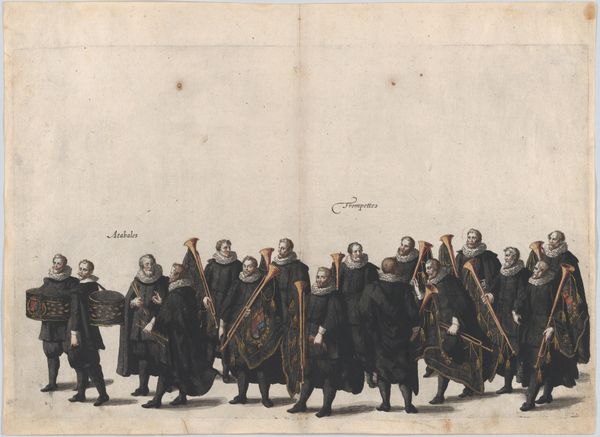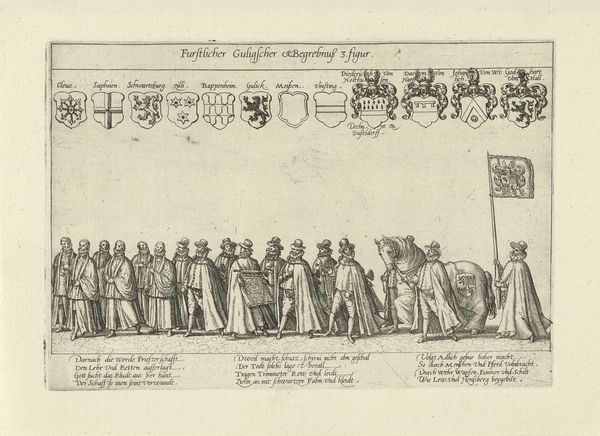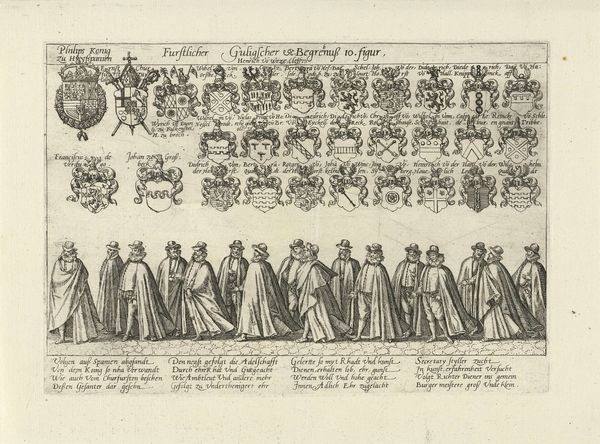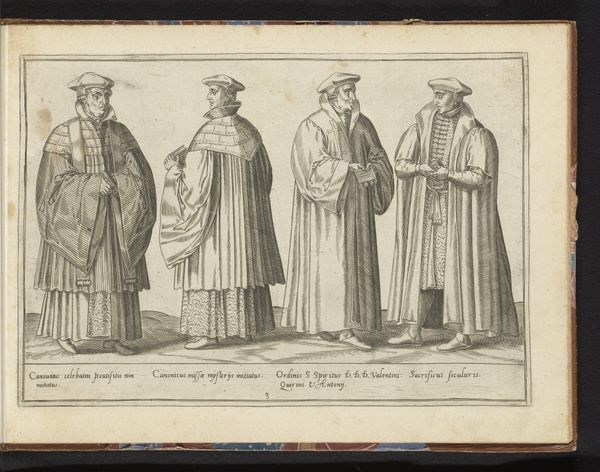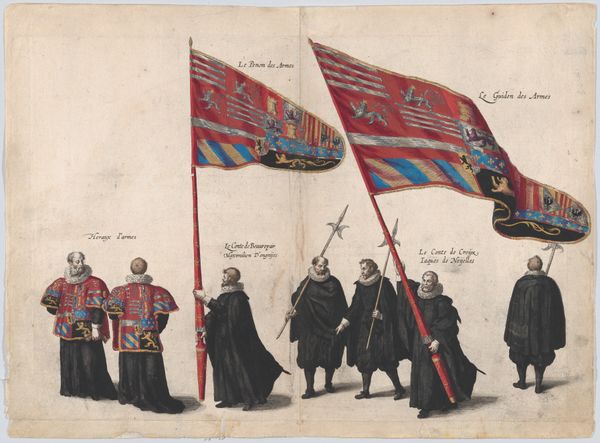
Plate 13: Members of the clergy marching in the funeral procession of Archduke Albert of Austria; from 'Pompa Funebris ... Alberti Pii' 1623
0:00
0:00
drawing, print, engraving
#
portrait
#
drawing
#
baroque
# print
#
history-painting
#
engraving
Dimensions: Sheet: 11 3/16 × 15 1/4 in. (28.4 × 38.8 cm) Plate: 9 1/2 × 14 11/16 in. (24.1 × 37.3 cm)
Copyright: Public Domain
Editor: This is a print from 1623 titled 'Plate 13: Members of the clergy marching in the funeral procession of Archduke Albert of Austria,' made by Cornelis Galle I. It's a fairly detailed engraving, showing a procession of clergymen in elaborate robes. I’m curious about the details embedded in their clothing and tools and how they signify status. What can you tell me about the broader implications of the making of such prints in the 17th century? Curator: The act of producing this engraving – the material, the labor, and its dissemination – highlights significant aspects of 17th-century society. Engravings like this were a form of mass media. The details in the image may have been less interesting than the overall status symbol, to you point; who was supposed to buy this image? Was it popular? How did its material production speak to wealth inequality and social hierarchy? Editor: So it's less about the specific image and more about what it meant to be able to reproduce and distribute images like this? Curator: Precisely. Think about the engraver's workshop. Who were his patrons? The materiality of the print itself -- the paper, the ink -- speaks to the complex economic relationships and technological advancements of the period. Do you notice any evidence in the visual textures indicating something about labor? Editor: I guess it requires a significant skill and labor to carve those fine lines into the metal plate for printing, but in the final print those actions are removed from sight. It’s kind of like these prints erase all the sweat involved. Curator: Indeed! This tension between skilled craftmanship and its eventual obscured status underlines how the art object functions within the cycle of production and consumption. I mean, isn't every product's origin somehow invisibilized in the end? Editor: It’s given me a different way of seeing the image, considering its creation process and social impact alongside its artistic qualities. Thanks! Curator: A materialist perspective often brings us to that point. Examining what is seemingly simple reveals rich insights into socio-economic structures.
Comments
No comments
Be the first to comment and join the conversation on the ultimate creative platform.
